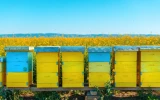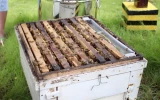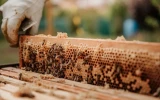How Many Acres Do You Need for Bees? (Less Than You Think)
When it comes to beekeeping, many aspiring beekeepers wonder how many acres of land they need to properly care for their honeybees. It's a common misconception that a large amount of land is required, but the good news is that keeping bees might require less acreage than you initially thought. How many acres do you need for bees? Let's find out.
A typical beehive only needs 1–2 acres to gather enough resources to provide the bees with pollen and nectar for sustenance. In general, a single hive of honeybees can thrive on as little as one acre of land, but some beekeepers prefer to have more space to allow the bees to forage for food and to prevent overcrowding.
Several factors can influence the ideal land size for beekeeping, including the preferred number of bees in the hive, the types of plants available in the area, hive location, entrance orientation, and the local climate. With the proper considerations, even a small area can ensure a thriving and productive beehive while keeping a safe distance from neighbors and minimizing human interference.
Summary
- Beekeepers typically recommend 2–4 beehives per acre for honey production, and 1–2 beehives per acre for pollination services.
- Some beekeepers have found success with lesser amounts of land, supplementing their bees' diets with sugar water or pollen patties when necessary.
- What matters most for the well-being of honeybees is not the quantity of land but the quality of their environment. Providing ample forage opportunities, minimizing disturbances, and properly managing beehives can lead to thriving honeybee populations regardless of the size of the area.
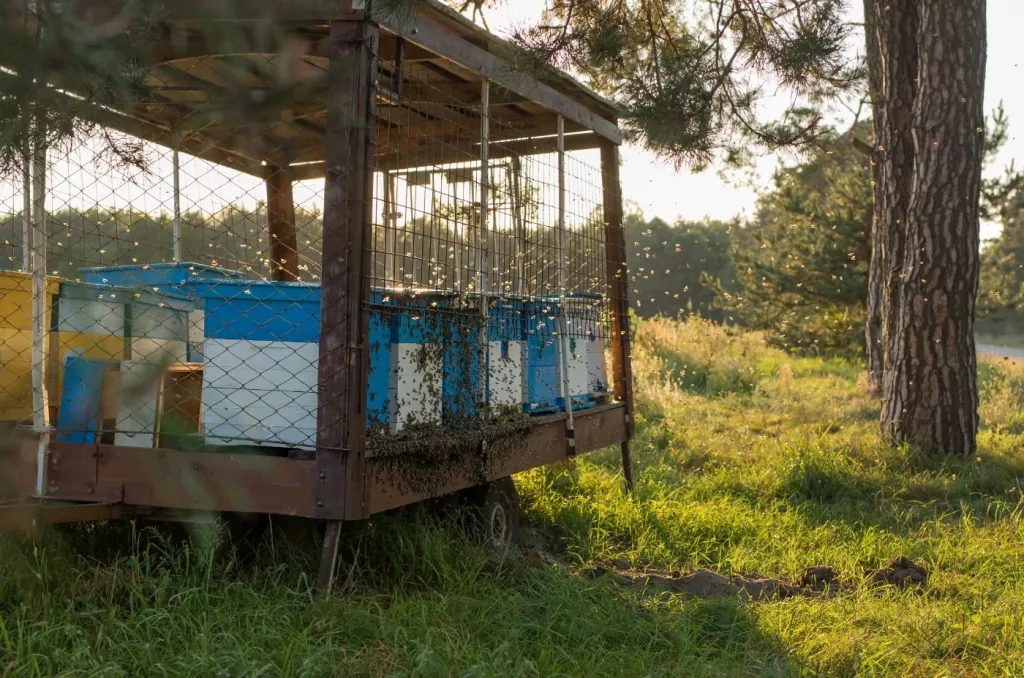
On this page:
A Beehive Needs Around 1–2 Acres of Land
When planning to establish a beekeeping operation, it's essential to consider the amount of land needed to support healthy and productive bee colonies. The appropriate acreage depends on two main factors: forage area, and competition and overcrowding.
By focusing on these factors, honeybee caretakers can create a thriving environment for bees on a relatively small piece of land. The amount of land needed for beekeeping is much less than one might assume. By focusing on the quality and diversity of the forage area and maintaining an appropriate hive density, beekeepers can establish successful colonies in areas as small as a backyard or rooftop garden.
Consider the forage area for the bees
A single beehive can forage in a roughly 3-mile radius, covering approximately 28 square miles. This means that a honeybee colony can efficiently gather food from an area covering roughly 8,000 acres. However, individual bees may occasionally travel farther if resources are scarce. Thus, honeybees do not actually require vast amounts of land to thrive, as they can make use of the diverse plant life within their foraging range.
Bees can adapt to smaller forage areas if necessary, so the focus should be on the diversity and quality of the available resources. In urban or suburban settings, beehives can often thrive in smaller spaces, such as rooftop gardens or small backyards, due to various plantings by humans.
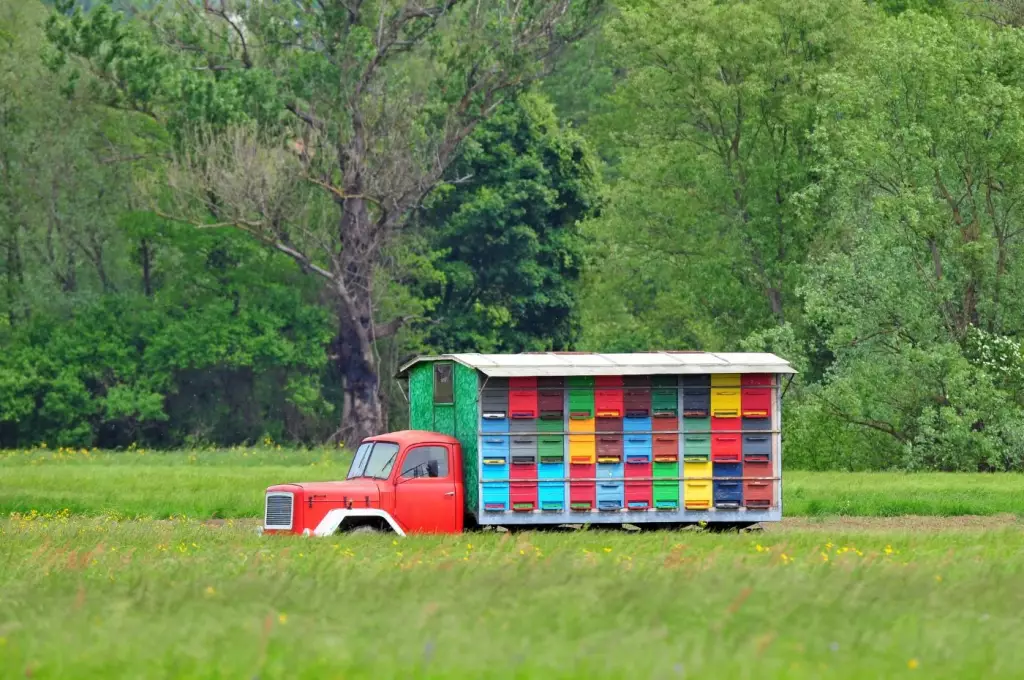
The forage area is the surrounding land where honey bees can find nectar, pollen, and water sources to sustain their colony. It's essential to provide bees with adequate forage areas to ensure their well-being and good honey production. The ideal forage area will include a mix of flowering plants, trees, and shrubs, offering a variety of nectar and pollen sources.
Consider the competition and overcrowding of the bees in the area
While it is true that honeybees can cover large areas in search of food, factors such as competition and overcrowding may impact their success. In areas with high bee populations, multiple hives may be competing for the same resources, leading to resource scarcity, weaker colonies, reduced honey production, and potential stress among bees.
When planning the amount of land needed for a honeybee hive, it's important to consider the existing local bee population and the availability of flowering plants throughout the entire season. It is possible that a smaller area with abundant and diverse plant life would be more suitable for honeybees than a larger area with limited resources.
The physical dimensions of a beehive are relatively small. However, it's crucial to consider the beehive density in relation to the forage area to avoid overcrowding and competition for resources. Hive density refers to the number of beehives in a given area.
The optimal hive density depends on the quality of the forage area and the specific goals of the beekeeper. For hobbyist beekeepers or those with limited space, a single hive may be enough to get started.
How to Maximize Beehive Productivity with Limited Space
Beekeeping requires less space than you might think, but maximizing productivity with limited space can make a tremendous difference. This section discusses four crucial aspects: smart planting, innovative beehive designs, high-quality habitat, and local beekeeping ordinances.
Smart planting and bloom periods of plants for your bees
One of the key factors in maintaining a productive beehive is ensuring a continuous supply of nectar and pollen throughout the season. The bees require a variety of blooming plants throughout the season to gather enough nectar and pollen for their survival.
To achieve this, consider planting a mix of native flowers, trees, and shrubs that bloom at different times of the year. This will not only benefit the honeybees but also contribute to a more vibrant and resilient landscape. Some examples of plants that are attractive to honeybees include:
- Spring flowers: crocus, daffodils, hyacinths, dandelion, blueberry, and willow keep your bees busy early in the year.
- Summer blooms: Lavender, cosmos, sunflowers, and bee balm are great choices for hot-weather blooms.
- Fall flowers: Asters, goldenrod, and sedum can provide valuable food sources for bees as the weather cools.
Plant these flowers to cover as much of the bloom period as possible in small, attractive groupings that catch bees' attention. Additionally, prioritize native plants that thrive in your area, as they require less maintenance and are typically more attractive to local bees.
Choose beehive designs that are ideal for small areas
Selecting the appropriate beehive design can help maximize the use of limited space. Here are two popular beehive designs that work best for small areas:
- Vertical Hives: The Langstroth hive is a classic example of a vertical hive. It features stackable boxes with removable frames for easy honey extraction and management. This design takes advantage of vertical space, making it a suitable option for limited land.
- Horizontal Hives: The Horizontal Langstroth hive and the Top bar hive are examples of horizontal hives. These hives are elongated, with frames or bars laid side by side. They occupy more ground space but are easier to manage, contributing to increased honey production without the need to lift heavy boxes.
When choosing a beehive, go for the design that best suits your available space and personal preferences. Both vertical and horizontal hives have their advantages and disadvantages, but whichever style you choose, managing a hive in a small area is achievable with careful planning and organization.
Create a high-quality habitat for your bees
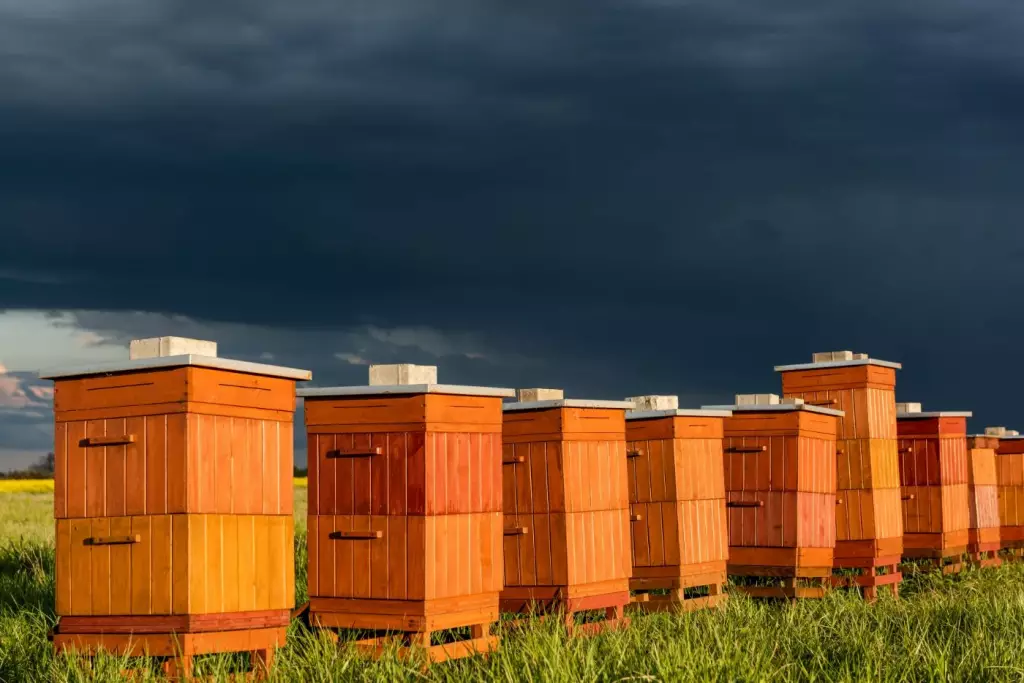
Instead of focusing on acquiring vast expanses of land, honeybee caretakers should prioritize creating a high-quality habitat with a wide variety of pollen and nectar-rich plants. This can be achieved in a relatively small space as long as the plants are properly selected and maintained throughout the year. Some ways to create an ideal environment for bees include:
- Planting a variety of native flowering plants that bloom at different times throughout the season
- Establishing wildflower meadows and planting mixtures of cover crops to provide additional forage
- Providing water sources, such as shallow ponds or birdbaths, nearby for the bees to hydrate
- Avoiding the use of pesticides and herbicides that can be harmful to bees and their forage
Keep in mind the local regulations and restrictions
When planning to keep honeybees, it's essential to be aware of any local regulations and restrictions in your area. This may include zoning laws, required permits, or specific beekeeping ordinances. Be sure to research your local government's guidelines and consult with neighboring property owners, as some may have concerns about bee allergies or other issues.

